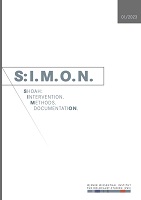Jewish and Romani Encounters under Slovak Persecution
Jewish and Romani Encounters under Slovak Persecution
Author(s): Hana KubátováSubject(s): Political history, Social history, WW II and following years (1940 - 1949), Fascism, Nazism and WW II, History of the Holocaust, History of Antisemitism
Published by: Wiener Wiesenthal Institut für Holocaust-Studien
Keywords: Jewish and Romani persecution; racial imaginary; fascist Slovak state;
Summary/Abstract: This article examines the persecution of Jews and Roma in wartime Slovakia, with a particular focus on the historically multicultural eastern region of the former Šariš Zemplín County. It studies the removal of Roma from Slovak towns and villages from 1941, and the 1942 deportation of Jews to occupied Poland. These events occurred concurrently with the regime’s “civilisation mission” in the peripheries. While it was Nazi Germany that fuelled the machinery of death and destruction that marked World War II, the speed and direction of ousting the Jews and Roma from Slovakia was not straightforward and depended on national and local factors and actors. The article shows that the racialisation of Slovakia’s borderlands was driven by both the urban elites in Bratislava who tried to appease Hitler and the national population, as well as the inhabitants of the volatile peripheries themselves. In this sense, the two processes of Jewish and Romani persecution were connected in the racial imaginings of the fascist Slovak state.
Journal: S:I.M.O.N. Shoah: Intervention. Methods. Documentation.
- Issue Year: 10/2023
- Issue No: 1
- Page Range: 95-111
- Page Count: 17
- Language: English

